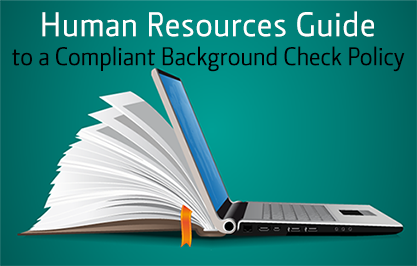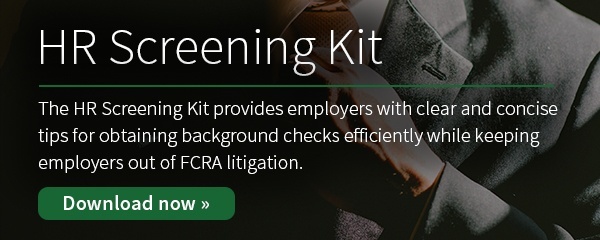Hiring a New Employee? Follow this 5-Step Checklist

If your company is hiring many employees at once or even if you're an HR department of one and only hire sporadically, a checklist is an organizational tool that is helpful. A checklist will ensure that every step is taken, creating consistency, and covering all of the legal responsibilities of hiring. Selecting the right candidate, on-boarding and integrating the new hire into the team can be a positive and successful experience.
When hiring a new employee, documented procedures, such as a checklist, can make the process better for the hiring manager, candidates and employees.
New Hire Checklist
Step 1: Create Consistent Job Descriptions
Before recruiting candidates for a position, the hiring manager should work with HR to create job descriptions. If possible, there should be consistency among similar job titles and departments that have certain expectations. Once the job titles and duties have been determined, it will be easier to run background checks as they relate to certain job requirements. This information will also establish the roles and responsibilities expected of new hires as they come on board, building a great rapport among the team.
Step 2: Communicate with Candidates
When placing an ad or posting a job, the candidate should get an idea of not only the job, but also the company they will be working for. Include information about company culture, keywords that will attract the right matches, and other benefits or perks about the business. After receiving resumes, acknowledge the receipt. Even after finding the right candidate for the job, let other applicants know that you have hired someone but you will be keeping their resumes in the case of another job opening. The more communicative you are, the more likely your candidates will feel at ease, be a good fit and want to work for you.
Step 3: Ask the Right Questions
After choosing a first round of candidates, the job interview is an important part of the process to narrow down the pool. Both the hiring or HR manager and the candidate can get a good idea of culture fit and qualifications by asking the right questions. Interview questions can be broad on the first go round but the candidate should have a clear understanding of the job role, perhaps even seeing the job description. The job description will also prompt questions on both sides to evaluate interest in the role and if the candidate has the right experience. The first round of interviews will remove those who aren't a good fit for the job. The hiring manager will then choose a few candidates to meet the person they may be reporting to, as well as potential co-workers, for a next round of interviews. Again, the interview questions are a critical component of hiring the right person the first time.
Step 4: Screen Candidates
For many HR managers, the question of when to screen job candidates is common. A best practice is to obtain consent and authorization for a background check when the individual applies for the position. During a second round of interviews, or when the hiring process is down to a few candidates, the applicants must have given consent to a screening and be aware that any job offer is contingent on the results of a background check. By waiting until there are only a few candidates to screen, your company can save money and time by screening only a few at a time. Any job descriptions, created in step one, should also include any specific background checks as they relate to that job responsibility as part of a background check policy. This will also save time and money by only running the screens needed for that particular job function.

Step 5: Make a Decision
The background checks will provide information to help the hiring manager make a decision to hire or consider not hiring. The HR manager is legally obligated, in the case of a no-hire due to the results of a background check, to follow adverse action steps as specified by federal law. If the decision is made to hire the candidate, the HR manager should be prepared with new hire forms, a copy of the job description, organized training and other activities to help the new employee feel welcome.
Best practices for HR managers, including templates and forms related to background checks, can be downloaded as part of VeriFirst's HR Screening Kit. The VeriFirst staff can also offer guidance for a legal and compliant hiring practice. Have any more questions? Let us know!
Share this
You May Also Like
These Related Stories

The Best Background Checks for Hiring New Employees

Human Resources Guide to a Compliant Background Check Policy

